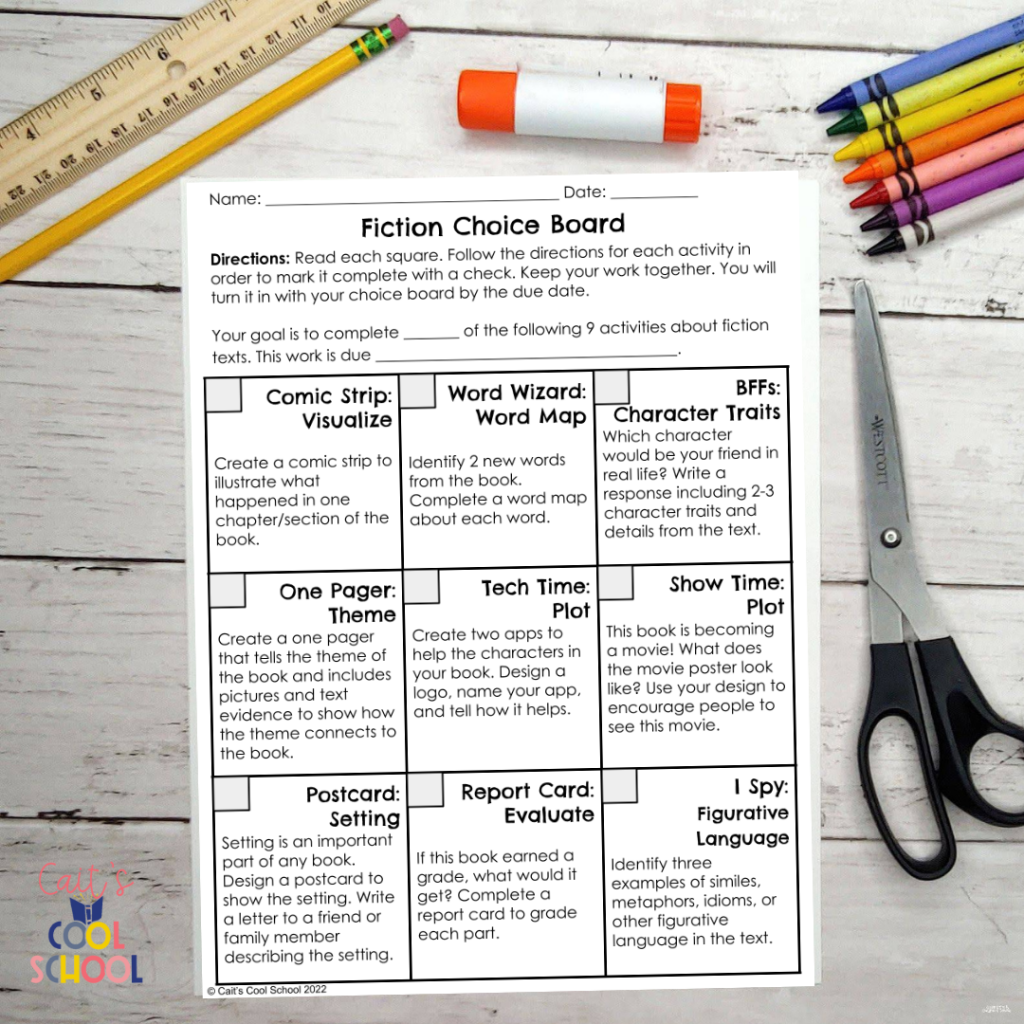
Why are choice boards such a big deal?
I’ve shared before about how providing students with options helps with classroom management. It not only gives the students a sense of control, but it also provides major buy-in for completing each activity. Knowing they don’t need to do everything can also be helpful.
The other major upside is I try to incorporate a range of fun activities to show comprehension rather than simply using multiple choice or short answers.
How does the choice board work?
First, students need to read any fiction text. This can be done as a whole group, individually, or in smaller groups. I had my class read the book independently in segments, and we did whole group discussions and word work. My teammate had her class listen to the audiobook each day.
Second, during and after their reading, they can complete any number of activities within a certain amount of time. You can edit and add this information on the choice board itself. You may choose a different amount of activities based on time to complete or students’ work habits and learning styles. Read more about how student choice helps out your classroom management here.

When can I use this?
- Independent book study
- End of quarter or unit study
- Early finisher activities
- Homework
- Challenge to complete over a school break
- Sub plans (especially if you’re out for multiple days- print and go!)
I love that this is something I can use more than once, or even leave as sub plans without having to write out an elaborate lesson. In fact, I did leave the choice board while I took a personal day and I was so grateful for having less to plan, still knowing my students would be learning.
How can I help my students to be successful?
- Make a teacher model of each activity and review the directions if needed. My team pitched in and we made models using The One and Only Ivan, which was a grade level read aloud. The models made sure students could see our expectations. It was easy for them to make the connections because they’ve already shown they understand the book well.
- Check in with students if this is used long term. For example, the first time I used this in class, my students had two weeks to read a novel and complete 5 activities. After 3 days, I checked in and gave them suggestions for where they should be. Some students struggle more than others with long range planning. Reminders and visuals (like a calendar) can be an opportunity to give more support to those students.
- Provide additional support as needed. For example, using the ability to edit the directions or add sentence starters. You could also provide suggested words for the Word Wizard: Word Map. While we read James and the Giant Peach, I purposely chose vocabulary they hadn’t encountered and encouraged my students to pick out more words to share out with the class. This was the extra support they needed to be successful.
More about novel studies:
- Building a Reading Community
- Teaching the Mystery Genre (Set the Stage to Engage)– my most popular blog series!
- Analyze Setting Using Historical Fiction
More about classroom management:
Feeling a little stuck with classroom management? Try this free rebooting guide!






 The first FIVE days of lesson plans for the beginning of the year.
The first FIVE days of lesson plans for the beginning of the year.